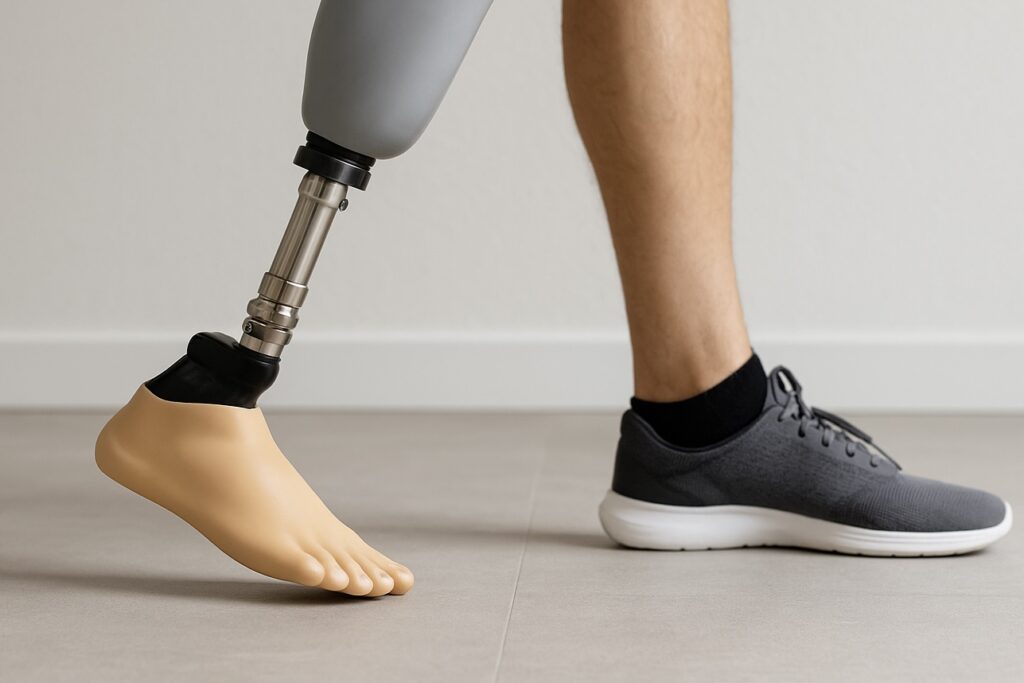
🦿 Comparing Prosthetic Feet: Hydraulic Ankles vs. Carbon Feet in Active Amputees
For people with below-knee (transtibial) amputations, the choice of prosthetic foot can greatly affect comfort, stability, and mobility. But with so many designs available — from non-articulated carbon feet to hydraulic ankle feet — which one works better for active amputees?
A study published in Injury compared outcomes in 42 highly active individuals with unilateral traumatic transtibial amputation, half using non-articulated carbon feet (NAA) and half using carbon feet with hydraulic ankles (AHA).
Key Findings
- Overall function was similar:
Both groups performed about the same on the 6-minute walk test, a standard measure of walking endurance. Pain levels, satisfaction, and quality of life scores showed no significant difference between groups. - Hydraulic ankles help on slopes:
People using non-articulated carbon feet reported greater difficulty descending ramps compared to those with hydraulic ankles. This suggests that hydraulic ankles provide an advantage in uneven terrain. - Different drawbacks:
Users of non-articulated feet often reported dissatisfaction due to inflexibility and lack of ankle motion.
Users of hydraulic ankles sometimes experienced mechanical issues like hydraulic leaks or stiffness.
Why It Matters
For active amputees, both types of prosthetic feet can provide excellent mobility and comfort.
However:
- Hydraulic ankles may offer a smoother and safer experience on slopes.
- Non-articulated carbon feet are simpler and more durable.
The right choice depends on lifestyle, terrain, and patient goals.
Clinical Perspective
At GoodDay Prosthetics & Orthotics, we know that prosthetic selection is about more than walking distance — it’s about living fully and confidently.
This research aligns with what we see in practice: both foot designs work well when matched to the right patient.
✅ GoodDay Prosthetics & Orthotics helps each patient find the perfect balance between performance, comfort, and reliability.
Source
Örücü Atar M, Demir Y, Kılınç Kamacı G, et al. (2022). A comparison of two different prosthetic feet on functional capacity, pain severity, satisfaction level and quality of life in high activity patients with unilateral traumatic transtibial amputation. Injury, 53(3):434–439.
Read full study →